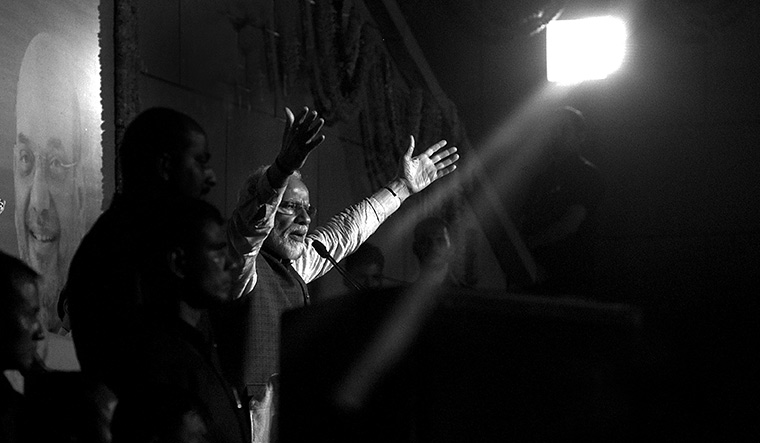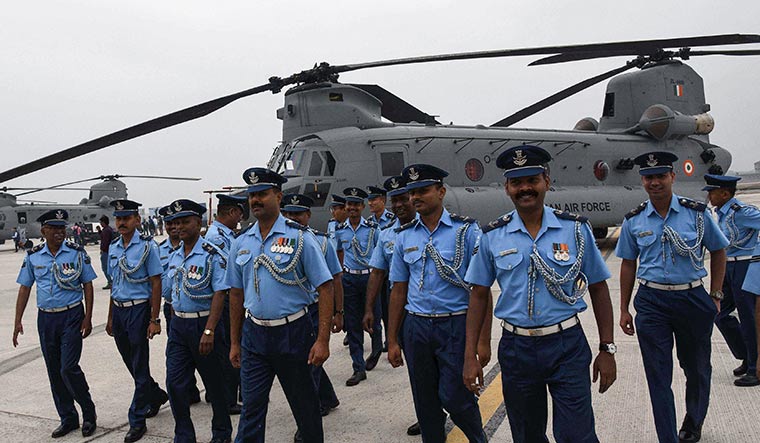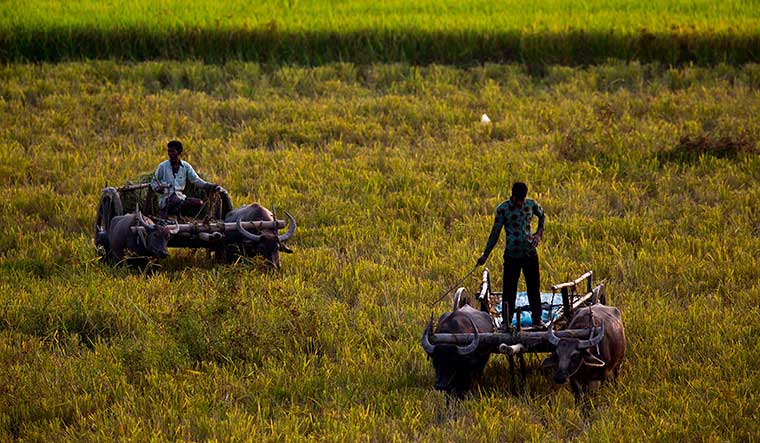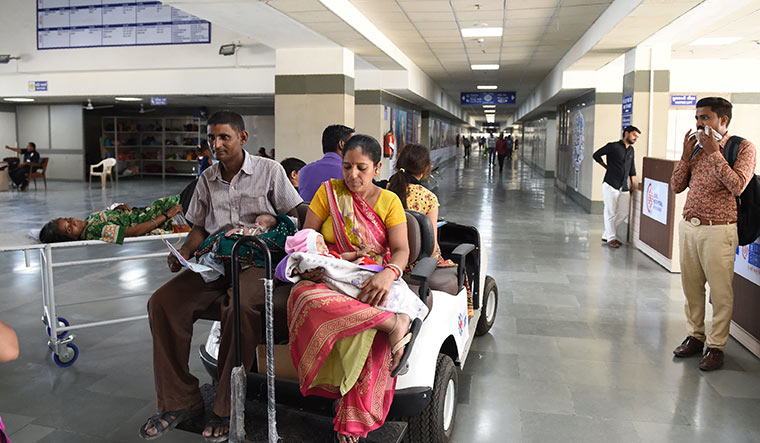Policies are framed the way the political class interprets the mandate.
Narendra Modi rode to power in 2014 on an anti-corruption juggernaut. After a cabinet meeting on May 27, a day after he was sworn in, Modi announced the setting up of a special team to unearth black money. His subsequent decisions—be it demonetisation, the law prohibiting benami transactions or even the goods and services tax—were all aimed at stemming the rot.
The 2019 mandate, which Modi termed a pro-incumbency wave, was even bigger. The BJP got more than 50 per cent votes in 224 of the 303 seats it won. The BJP recorded its highest vote-share jumps, of more than 6 per cent, in constituencies that were largely rural. The saffron party got over 22 crore votes, around five crore more than in 2014. The mandate surprised political observers, as it gave no indication of rural or farmer distress. Even dalits and scheduled tribes voted overwhelmingly for the BJP, as evident from the party’s huge margins in many constituencies.
Nationalism was a key theme that influenced voters. Modi pushed his muscular doctrine on Kashmir, national security and bilateral relations, particularly with Pakistan and China, which won him overwhelming support from first-time voters and women.
Hindutva was another factor that worked in his favour. The cultural agenda of building a Ram temple in Ayodhya will be a priority for the new government, along with the removal of Article 370 (which gives autonomous status to Jammu and Kashmir) and Article 35A (which allows the assembly to define permanent residents of the state). Infrastructure development, poverty alleviation and the formulation of an education policy will also figure high on the list.
The first indication of his government’s priorities came from Modi himself. “There will be only two castes in the country—the poor and those who lift the poor out of poverty,” Modi said in his victory speech. The message: his welfarist focus will work in tandem with efforts to help the economy rebound.
The first Modi government’s 33 welfare schemes had 24 crore beneficiaries. “These people voted for us and so did others, thinking that they, too, would benefit,” said a BJP leader.
The focus of the new government will be on seamless delivery of the benefits. To improve the delivery mechanism and cut the red tape, Modi is expected to initiate bolder bureaucratic reforms. In his first term, he had brought in 10 specialists from outside the IAS, granting them the rank of joint secretary. This time, he is expected to recruit technocrats at the governance level, giving a bigger boost to the bureaucracy.
The government has promised more than Rs25 lakh crore for the agri-rural sector. The aim is both developmental and political; anti-poverty slogans had powered the Congress to many a poll victory. Also, big announcements are expected in the July budget, which could become a thanksgiving one replete with bonanzas, tax reliefs and new schemes.
Ayushman Bharat, the health care programme that provides benefits up to Rs5 lakh to each family, will be scaled up to cover 50 crore people. Young entrepreneurs have been promised collateral-free credit up to Rs50 lakh and the setting-up of a Rs20,000-crore seed startup fund. These schemes are aimed at generating jobs—an area where the government seems to have done poorly. Apparently, in an effort to change that perception, the government is mulling changes in labour laws to include part-time jobs and freelance opportunities in jobs-related data.
The government has unfinished business in the Rajya Sabha, where triple talaq, medical council and citizenship bills are pending. The BJP-led National Democratic Alliance will get majority in the upper house by 2021, thus giving it unprecedented mandate to fulfil its agenda, including the building of Ram temple and the abrogation of Articles 370 and 35A.
Modi had achieved many firsts in foreign policy in his first term. His second innings will pick up from where he left off. The Iran issue is a pressing concern, as the US’s waiver of its Iran sanctions for India has come to an end. India is in a spot now, as 10 percent of its energy needs are fulfilled by Iran. India has also stopped imports from Venezuela, another big supplier hit by US sanctions.
How India negotiates the troubled waters will be a test of both diplomacy and trade. Iranian supplies come at special rates, and it will be difficult for India to source them from other countries at similar prices. If India does succeed in that, it would have to be careful about the message it sends Iran, which India has wooed actively as a partner in its war against terror.
The strategic Chabahar port project in Iran is currently out of the ambit of the US sanctions, but its future depends on how the situation progresses. India has a lot riding on the project, which provides an alternative route to Afghanistan and opens up Central Asia for India.
China’s decision to allow the UN to designate Jaish-e-Mohammed chief Masood Azhar as a terrorist was a diplomatic victory for India. But, with the trade war between the US and China intensifying, India will have to learn to steer the best course for itself.
Modi and Xi Jinping’s informal summit in Wuhan last year gave bilateral ties a new strength. The next informal meet will be held in India this year. Before that, however, Modi will get at least two opportunities to meet Xi—the Shanghai Cooperation Organisation summit at Bishkek in Kyrgyzstan (June 14-15) and the G-20 summit at Osaka (June 28-29), where Modi will also meet US president Donald Trump and Russian President Vladimir Putin.
The priority for the new government, however, will be consolidating India’s neighbourhood, as evident from the invites to Modi’s swearing-in that were sent to the heads of the member nations of BIMSTEC, or the Bay of Bengal Initiative for Multi-Sectoral Technical and Economic Cooperation. South Block officials say the scale of outreach by India in the past five years has been phenomenal—$25 billion in lines of credit to 61 countries, 40 per cent of it to countries in the neighbourhood. At $7.86 billion, Bangladesh was the biggest beneficiary. “The outreach has been done; now it will be time to consolidate,” said a senior official.
Nowhere will this be more important than in the Maldives, the Indian Ocean archipelago whose location is strategically significant. With a friendly government under President Ibrahim Solih in Male, India’s work should be easier. Modi is making Male a port of call for the first foreign tour of his second term.
Relations with Pakistan need recalibrating. G. Parthasarathy, former high commissioner to Islamabad, says the Balakot strike changed the rules of the game by calling Pakistan’s nuclear bluff. Now, with sanctions on Azhar in place, Pakistan will be keen to squirm out of the Financial Action Task Force’s grey list. But, it remains to be seen whether there would be a dip in cross-border terror attacks.
‘Kashmir first, Pakistan later’ could become Modi’s new policy. “There has been a realisation that the Kashmir problem is an internal one, and it needs to be addressed first,” said a senior official in the Union home ministry. “There can be no talk with Pakistan that includes Kashmir.”
In a recent speech, Kashmiri separatist leader Mirwaiz Umar Farooq described Kashmiri pandits as his own brothers and urged them to return to the valley. The outreach attempt is being viewed by the home ministry and the security establishment as yet another success of the Modi government’s multi-pronged approach to curb violence and restore peace.
An immediate priority would be the peaceful conduct of the Amarnath Yatra, which will begin on July 1. The government cannot afford a repeat of 2017, when a terror attack on the yatra and the subsequent security operations resulted in the breakdown of the PDP-BJP government in the state.
“Sooner or later, the government has to announce elections in Jammu and Kashmir. It is the need of the hour to soothe the volatile aspirations of the youth in the state. The government is upbeat after the successful operations by security forces that got a free hand to crush militancy. After the Balakot strikes, there is also considerable dip in the aggravations on the international border,” said Arun Choudhry, former special director of the Intelligence Bureau.
The IB and the Research and Analysis Wing may get new heads in June, as incumbents Rajiv Jain and Anil Dhasmana were given six-month extensions that will end soon. The security agencies are also gearing up for a digital shift, with the government expected to fast-track the National Intelligence Grid (NATGRID).
Another critical area for the Modi government will be the defence sector, where India’s strategic engagement with world powers will be driven by arms deals. Russia was the biggest gainer in Modi’s first term; this time, it could be the US, as New Delhi works hard to find ways around Washington’s sanctions threat. India is expected to expedite the ongoing procurements, even as it tries to plug the critical shortage of fighter aircraft, submarines, minesweepers, air defence systems and infantry weapons.
Frank O’Donnell, fellow at the US Naval War College, told THE WEEK that the strengthened mandate enables Modi to reach out quickly to the US. “There are a number of irritants on the horizon that will need to be quickly resolved, if they are not to become larger problems in the relationship,” he said.
Finally, the government’s key priorities would be determined by Modi’s governance style—an attention-catching mix of continuity and policy surprises like demonetisation. How many surprises are in store in the next five years? That is anyone’s guess.





